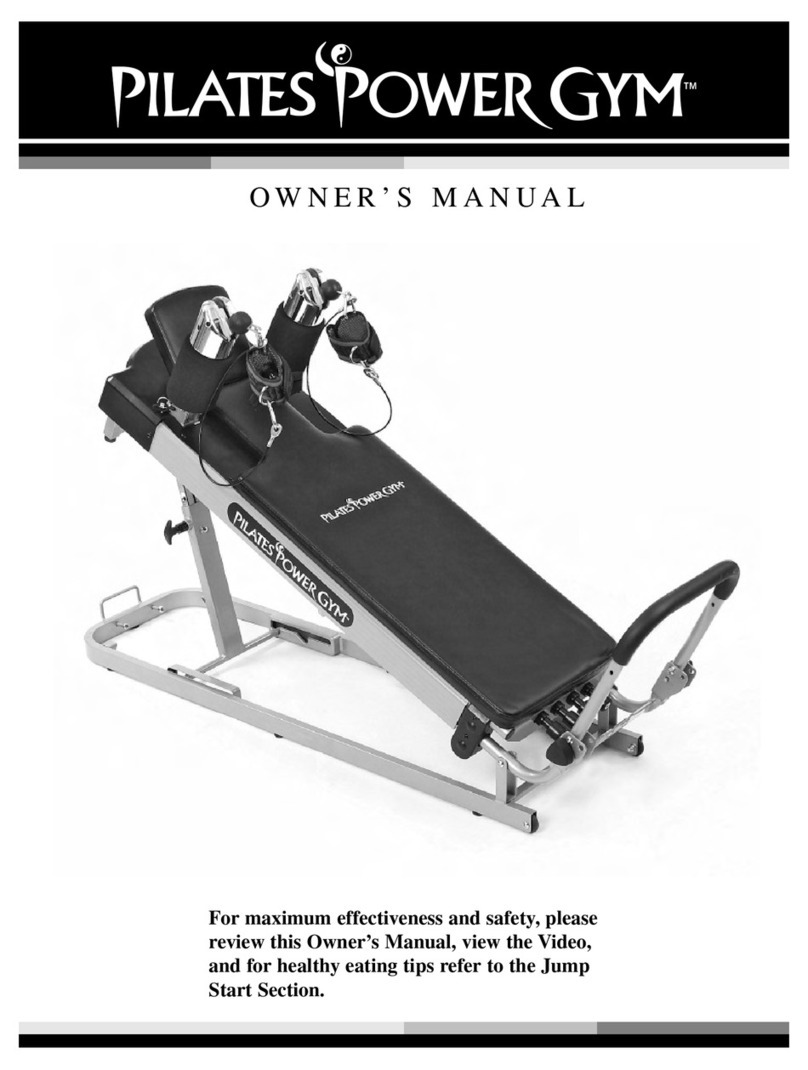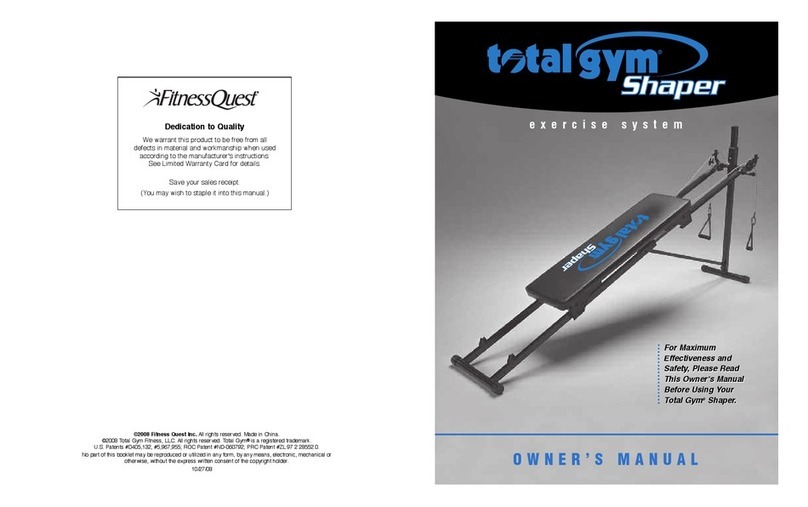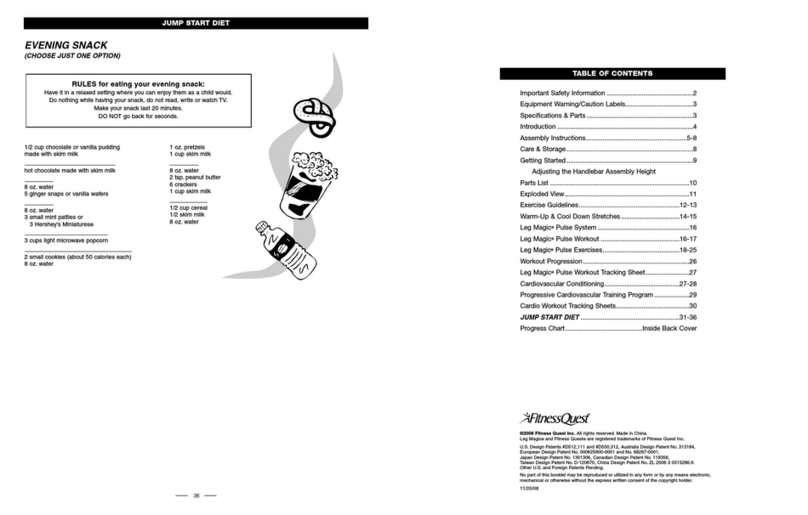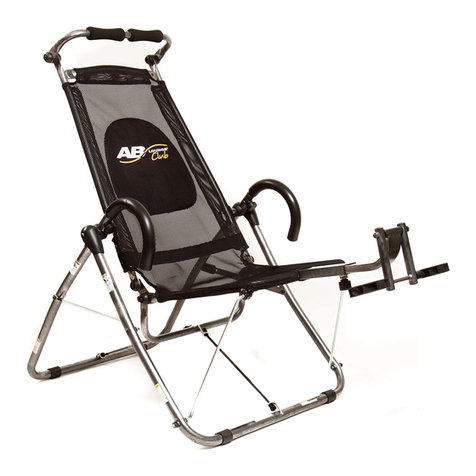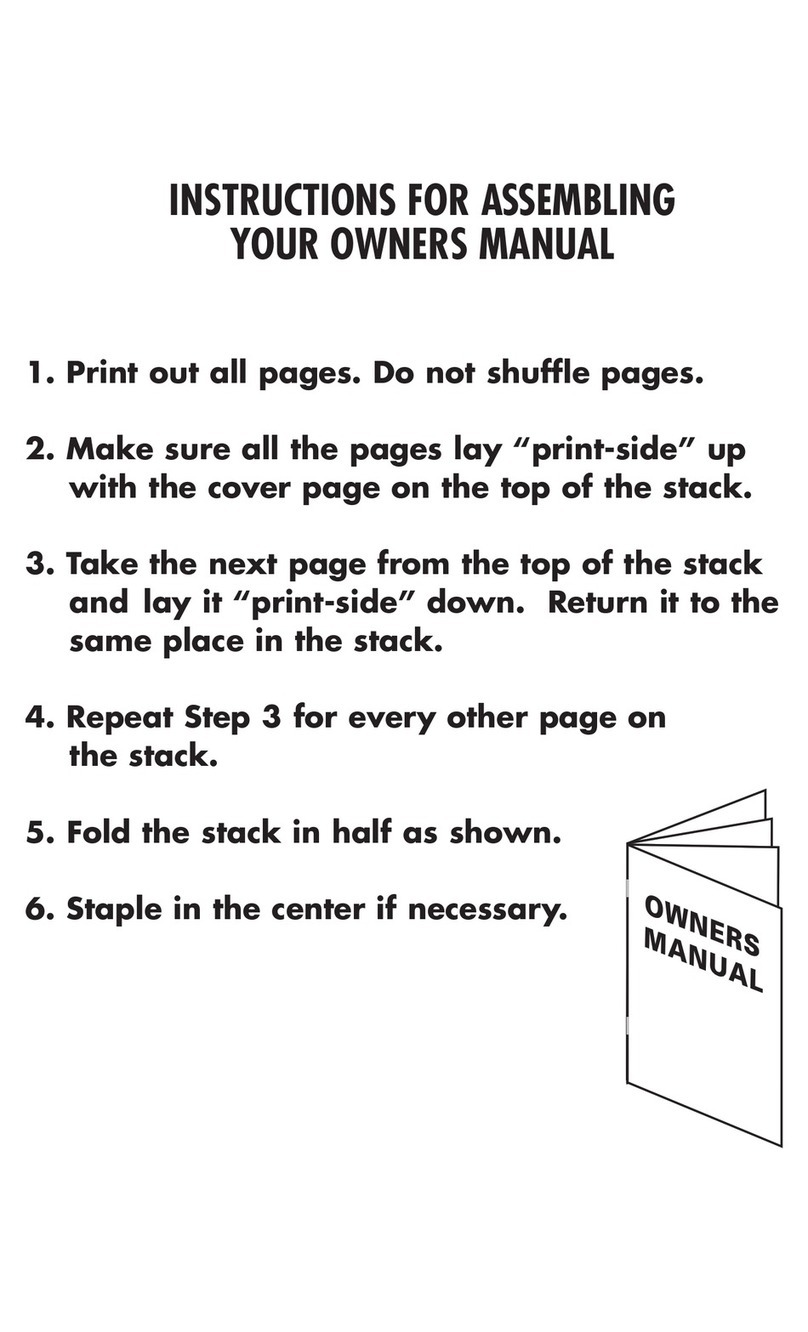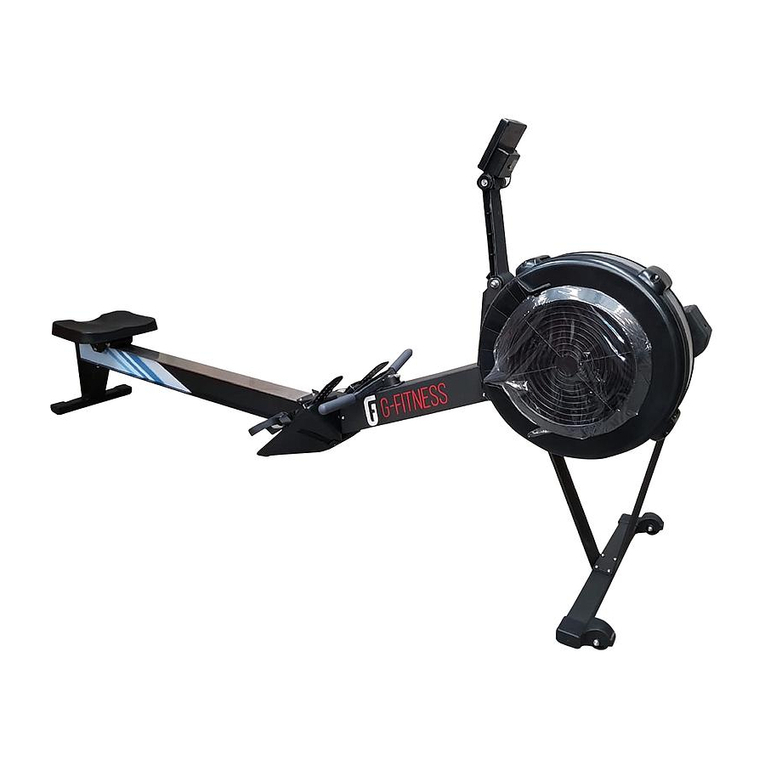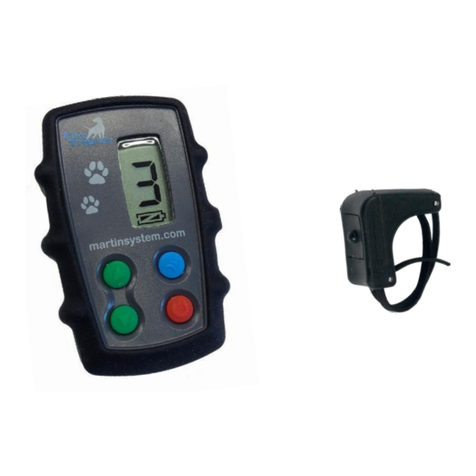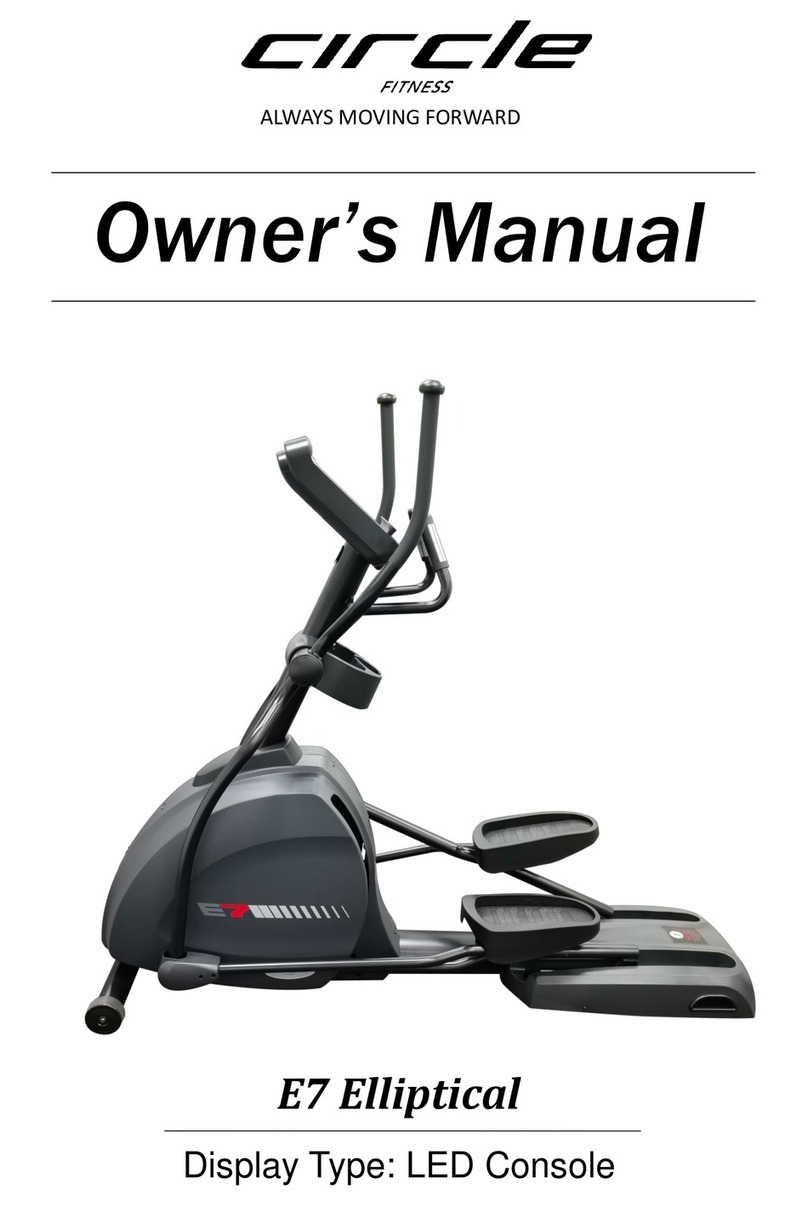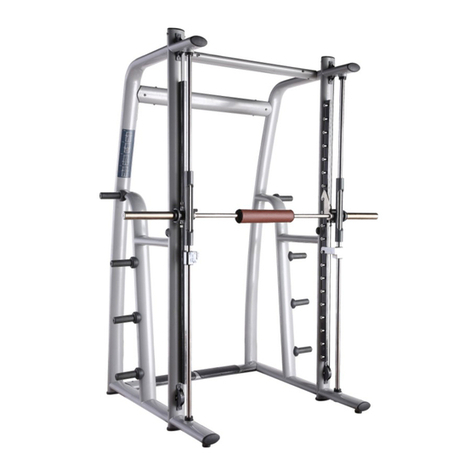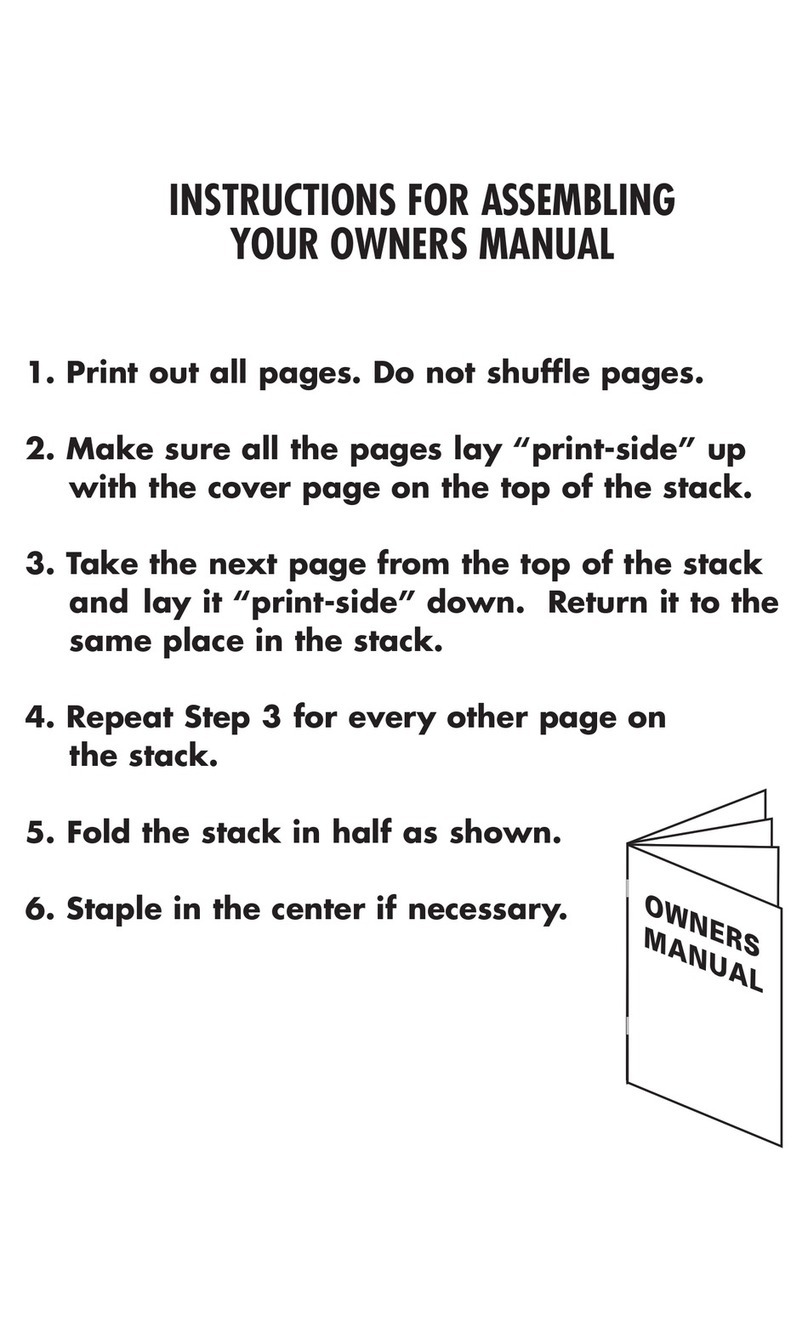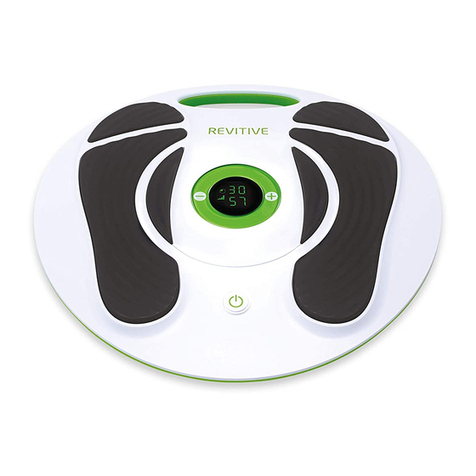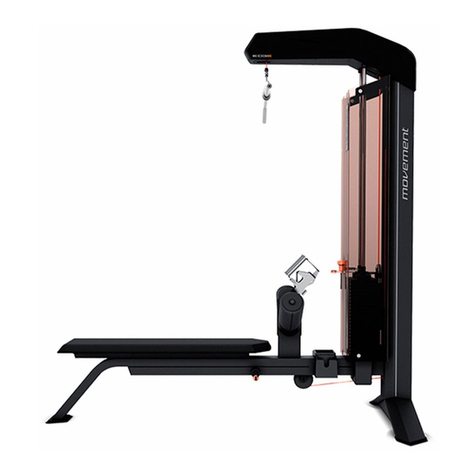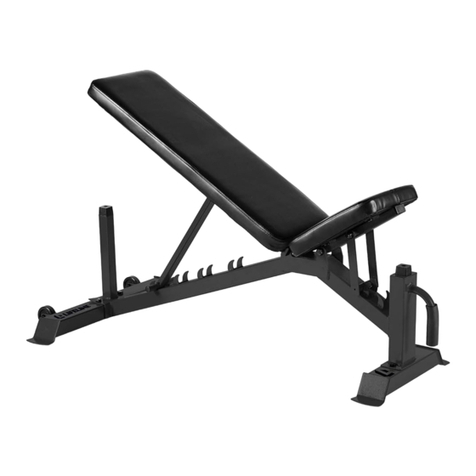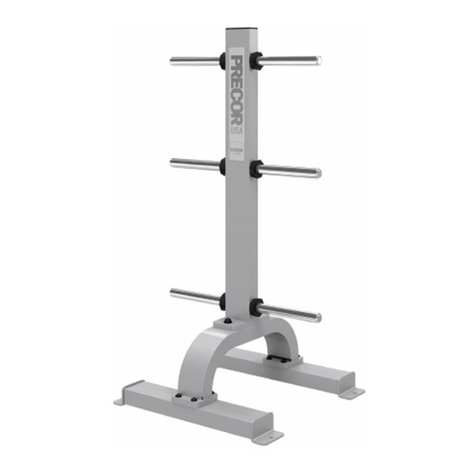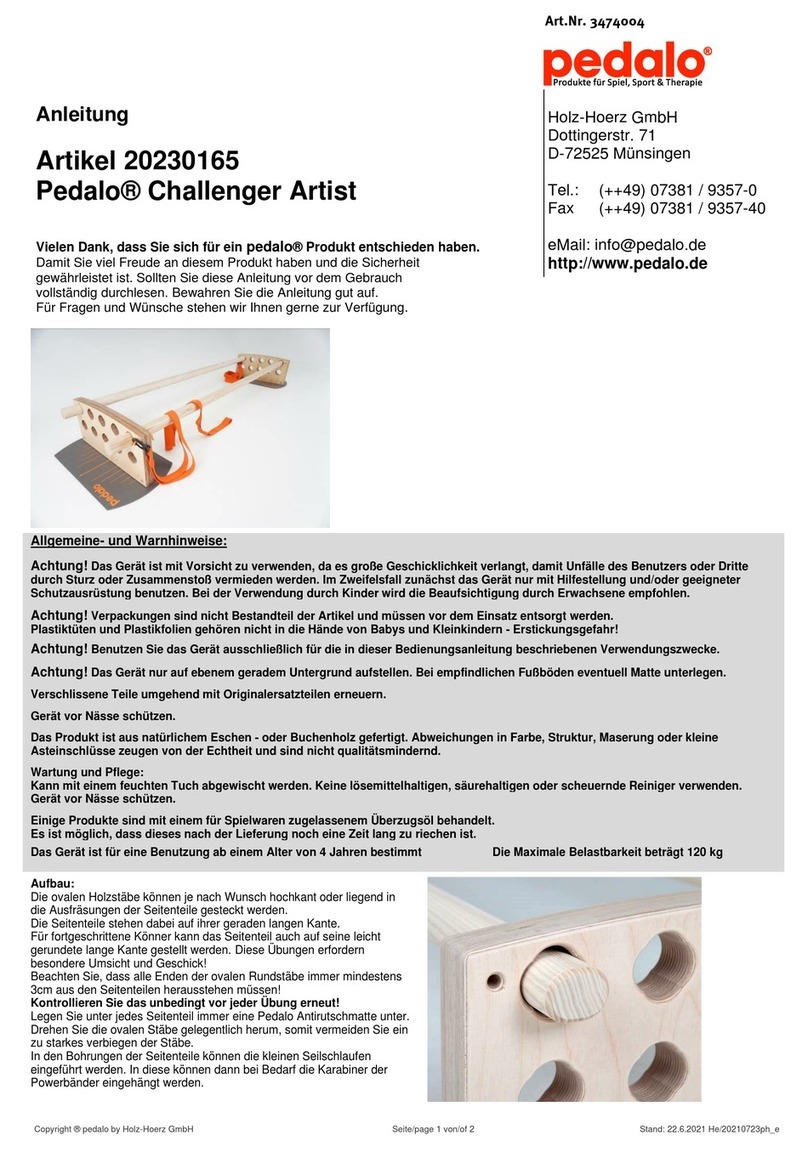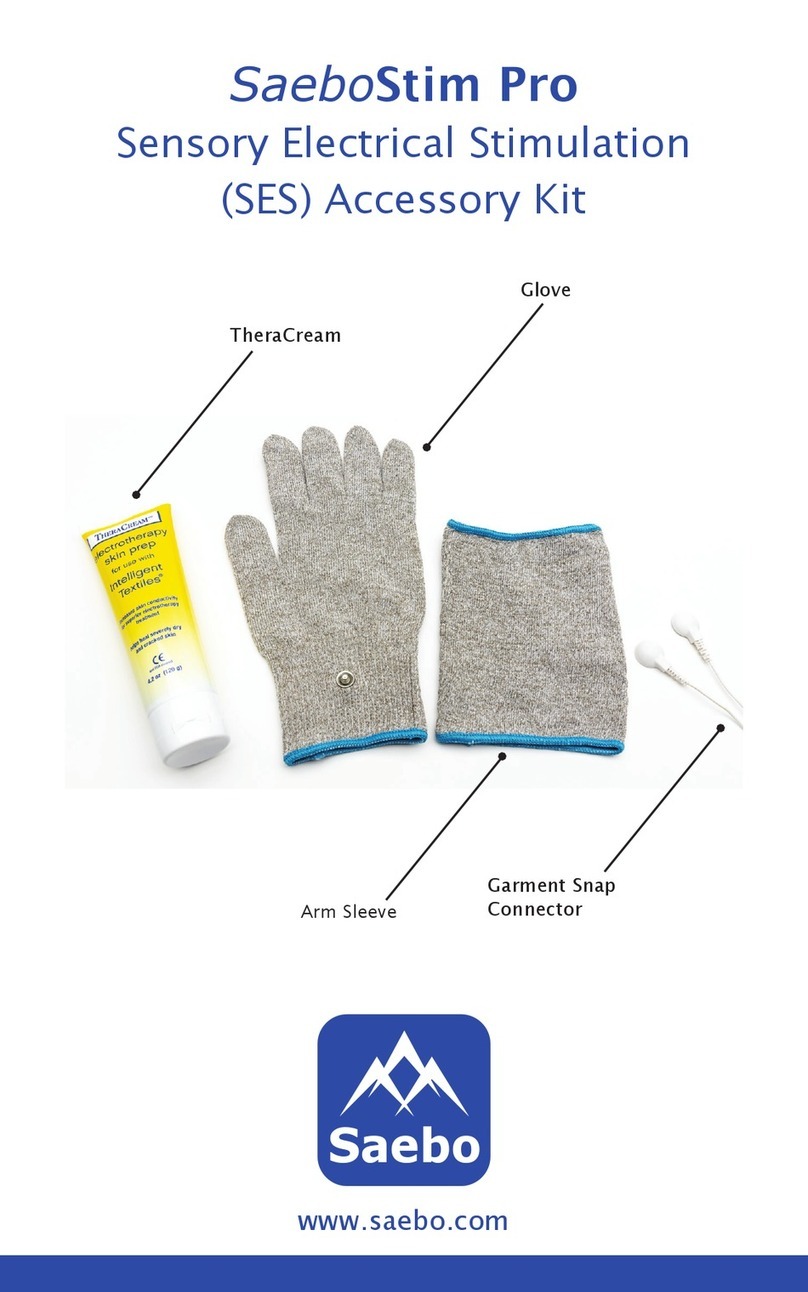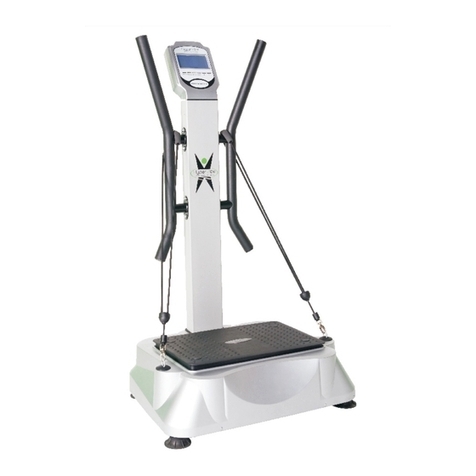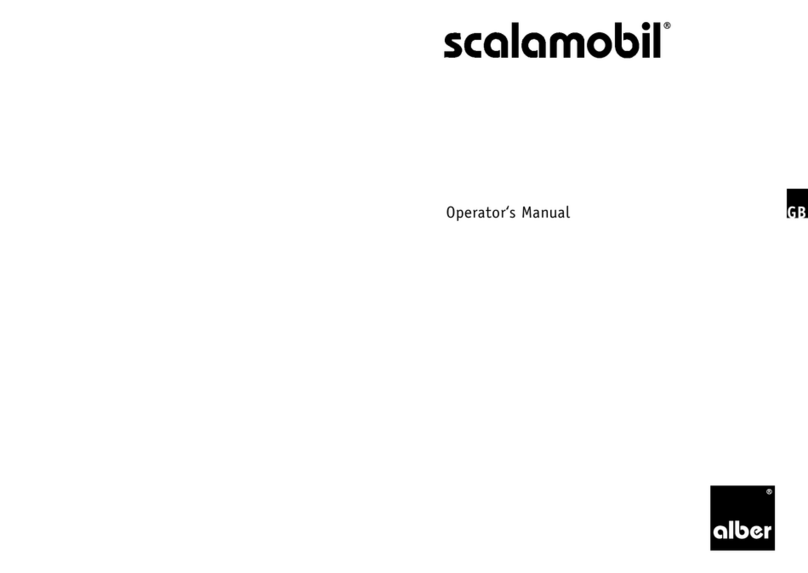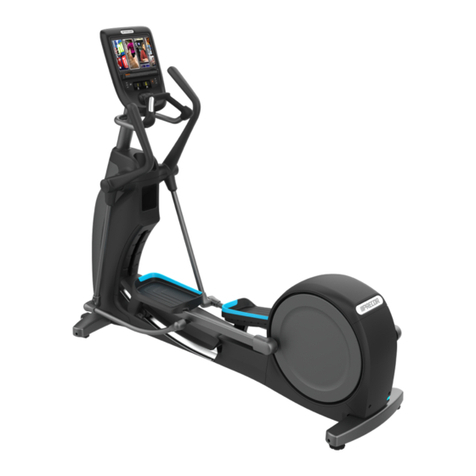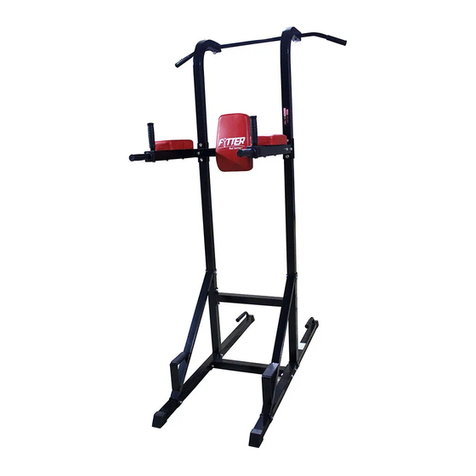
-------- 13 ---------------- 28 --------
Benefits of Aerobic Training
Health benefits of aerobic exercise include the following:
1. A stronger and healthier heart.
2. Increased HDL. This “good” cholesterol helps keep
your arteries unplugged and healthy.
3. Decreased total cholesterol. This is the debris in
your blood that can clog your arteries.
4. Reduced blood pressure. Even moderate exercise
can help.
5. Reduced risk for heart attack and stroke.
6. Decreased body fat and an ability to help you
reach your desirable weight. You’ll become a better
fat-burner and burn a lot of calories every session.
7. Decreased risk for diabetes.
8. Reduced feelings of anxiety, tension, and depression.
9. Improved sleep.
10. Higher levels of energy. Efficient delivery and use
of blood and oxygen is the key to increased vigor
and performance.
Warming Up And Cooling Down
Warming up and cooling down are essential to a
balanced and safe exercise program. A proper
warm-up and cool-down can:
• Make your workouts safe and easier to do,
• Limit the risk of unnecessary stress on your heart,
• Get you ready for your activity,
• Improve your stamina and endurance (you won’t
tire as quickly),
• Decrease your risk for injury,
• Increase enjoyment of your workouts, and
• Help you stick with your health and fitness program.
Warm-Up
To prevent injury and maximize performance, we
recommend that each workout period should start with
a warm-up.Your warm-up should gently prepare your
muscles for the coming exertion. Start by doing 5 to 10
minutes of gentle exercise that gradually increases your
heart rate and loosens up your muscles.Your warm-up
exercise should be aerobic in nature and only require an
easy, unforced range of motion. This should be followed
by 5 to 10 minutes of stretching. Refer to the stretches
found on pages 14 and 15 of this manual. Never push
yourself beyond a point of gentle tension or strain.
Keep your movements gentle, rhythmic and controlled.
Cool Down and Stretching
Your workout should be followed by a cool down. The
cool down should consist of 5 to 10 minutes of slow
walking followed by stretching. Refer to the stretches
found on pages 14 and 15 of this manual. Never push
yourself beyond a point of gentle tension or strain.
Keep your movements gentle, rhythmic and controlled.
How Often, How Long, and How Hard
The choices you make about the frequency (how often),
duration (how long), and intensity (how hard) at which
you will train, will directly influence your training results.
How often. If you want to see serious improvements in
your fitness, lose weight and develop a good training
base, you need to do cardio workouts three to six
times per week.
If you are just starting a program or out of shape, don’t
let these recommendations discourage or mislead you.
Realize that doing cardio training two to three times per
week will still result in significant fitness improvement
and health benefits.Your long-term goal is to build up
to exercising your heart on most days of the week.
How long. How long you work out depends on your
current level of fitness. Again, if you’re just starting a
program or out of shape, don’t follow strict textbook
recommendations. Instead, start with 5 to 10 minutes
once or twice per day. You will see significant fitness
improvement. Your long-term goal is to build to a
duration of 30 to 60 minutes of cardiovascular
activity on most days of the week.
How hard. Aerobic intensity guidelines for healthy adults
are generally set at 60 to 85 percent of heart rate. But,
if you’re out of shape, remember that moderate to low
level and consistent cardiovascular training – well below
the standard recommendations set forth – can result in
substantial and beneficial effects to your health and
can greatly improve cardiovascular endurance.
You can use the following calculation to determine what
percentage of your heart rate you are working at:
% heart rate = (220 - age) x %.
Using this calculation, a 70% heart rate for a 40 year old
would be (220 - 40) x 70% or 126. Thus, this individual
would need to reach 126 beats per minute to equal a
70% heart rate.
The above are guidelines, people with any medical
limitations should discuss this formula with their
physician.
When to Exercise
The hour just before the evening meal is a popular time
for exercise. The late afternoon workout provides a
welcome change of pace at the end of the work day
and helps dissolve the day's worries and tensions.
Another popular time to work out is early morning,
before the work day begins. Advocates of the early start
say it makes them more alert and energetic on the job.
Among the factors you should consider in developing
your workout schedule are personal preference, job and
family responsibilities, availability of exercise facilities
and weather. It's important to schedule your workouts
for a time when there is little chance that you will have
to cancel or interrupt them because of other demands
on your time.
You should not exercise strenuously during extremely
hot, humid weather or within two hours after eating.
Heat and/or digestion both make heavy demands on
the circulatory system, and in combination with
exercise can be an over-taxing double load.
easuring Your Heart Rate
When checking Heart Rate during a workout, take your
pulse within five seconds after interrupting exercise
because it starts to go down once you stop moving.
Count pulse for 10 seconds and multiply by six to
get the per-minute rate.
Target Heart Rate
Aerobic intensity guidelines for healthy adults are
generally set at 60 to 85 percent of heart rate. But, if
you’re out of shape, remember that moderate to low level
and consistent cardiovascular training – well below the
standard recommendations set forth – can result in sub-
stantial and beneficial effects to your health and can
greatly improve cardiovascular endurance.
You can use the following calculation to determine what
percentage of your heart rate you are working at:
% heart rate = (220 - age) x %.
Using this calculation, a 70% heart rate for a 40 year old
would be (220 - 40) x 70% or 126. Thus, this individual
would need to reach 126 beats per minute to equal a
70% heart rate.
The above are guidelines, people with any medical
limitations should discuss this formula with their
physician.
Clothing
All exercise clothing should be loose-fitting to permit
freedom of movement, and should make the wearer
feel comfortable and self-assured.
Never wear rubberized or plastic clothing, garments like
this can interfere with the evaporation of perspiration and
can cause body temperature to rise to dangerous levels.
Wear comfortable athletic shoes made of good support
with non-slip soles, such as running or aerobic shoes.
Tips to Keep You Going
1. Adopt a specific plan and write it down.
2. Keep setting realistic goals as you go
along, and remind yourself of them often.
3. Keep a log to record your progress and
make sure to keep it up-to-date. See
charts in this booklet.
4. Include weight and/or percent body fat
measures in your log. Extra pounds can
easily creep back.
5. Enlist the support and company of your
family and friends.
6. Update others on your successes.
7. Avoid injuries by pacing yourself and
including a warm up and cool down
period as part of every workout.
8. Reward yourself periodically for a job
well done!






















